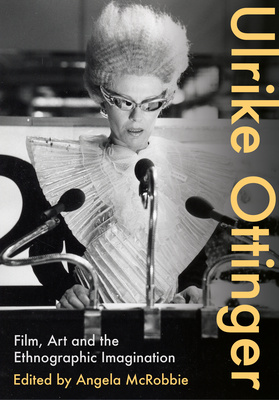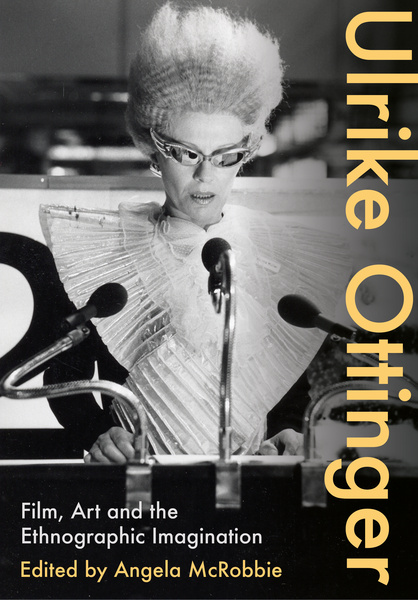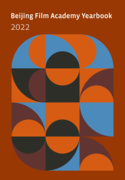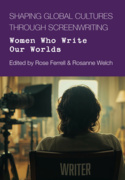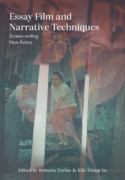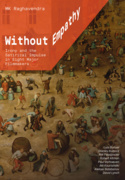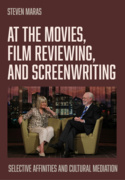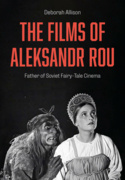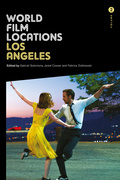Ulrike Ottinger (Book)
Film, Art and the Ethnographic Imagination
Comprises scholarly engagements with the various outputs of the prolific Berlin based German artist Ulrike Ottinger born in Constance in 1942 to a Jewish mother and a non-Jewish father both of whom were protected from the Nazis by the paternal grandmother. The book consists of thirteen contributors, one commentator and 5 interviews. 20 b&w illus.
Edition
The first English language scholarly collection of articles on the leading Berlin based German artist and film-maker Ulrike Ottinger. The articles engage with the full range of the works, from the early Berlin feature films of the 1970s and .'80s to the ethnographic documentaries also including the art exhibitions, photography shows, installations, and artist books. The book brings together feminist film theorists with art historians and cultural theorists, each with a distinctive and detailed perspective on the queer fabulist genres of Ottinger now in her 80s.
Angela McRobbie FBA (Fellow of the Bristish Academy) is a British cultural theorist, feminist and commentator whose work combines the study of popular culture, contemporary media practices and feminism through conceptions of a third-person reflexive gaze. Emeritus Professor Goldsmiths University of London PhD Loughborough University Hon Doctorate Glasgow University, Visiting Professor Loughborough University.
List of Figures
Acknowledgements
Introduction – Angela McRobbie
PART ONE: The Wide Expanse of Work
1. Ulrike Ottinger in the Mirror of her Movies – Patricia White
2. Moving Artefacts: Objects and their Agencies in Ulrike Ottinger’s Films – Katharina Sykora
3. Wit and Humour – When Objects Look Back: Comical Constellations in Ottinger’s Work – Gertrud Koch
PART TWO: The Cities
4. Ulrike Ottinger and the Fashion Imagination in Bildnis einer Trinkerin (1979) – Angela McRobbie
5. Ottinger’s Berlin: Exotic of the Everyday – Esther Leslie
6. Prater (2007) Cinema’s Carousel – Mandy Merck
PART THREE: China, Mongolia, Japan, Korea
7. Rewriting the Ethnos through the Everyday: Ulrike Ottinger’s China. Die Künste – Der Alltag – Cassandra Xin Guan
8. A Timely Education: Johanna d’Arc of Mongolia (1989) – Erica Carter and Hyojin Yoon
9. Exil Shanghai as Audio-Visual Archive and Cross-Cultural Collage – Tim Bergfelder
10. Hochzeiten – Laurence A. Rickels
PART FOUR: Shadows of the Past: Hoards and Collections
11. ‘Paris~Berlin et le monde entier’: Ulrike Ottinger’s Points of Departure – Dominic Paterson
12. Shadow Plays: Charting Ulrike Ottinger’s Recent Navigations – Nora M. Alter
13. Anachronism and Anti-Conquest: On Chamisso’s Shadow – Thomas Love
PART FIVE: Comment and Interviews
14. Ulrike Ottinger and the Strange Death of Metaphor – Adrian Rifkin
15. ‘Most Young Women... Are Bihonists’: Interview with Yeran Kim – Angela McRobbie
16. ‘We Were Pioneers for Fashion Spectacles That Didn’t Exist Before’: Interview with Claudia Skoda – Julia Meyer-Brehm
17. ‘Back Then We Often Went to the "Lipstick"’: Interview with Heidi von Plato – Julia Meyer-Brehm
18. ‘The Magic of Costume and Masquerade’: Interview with Gisela Storch-Pesalozza – Thomas Love
19. ‘As a Viewer You Have a Lot of Freedom’: Interview with Wieland Speck – Thomas Love
Notes on Contributors
Index
'With a ‘monstrous capacity to make images’ (Rifkin) and a career that’s so far spanned 60 years, filmmaker, artist, photographer, Ulrike Ottinger remains a huge figure. This monumental collection of essays and commentaries offers an essential tribute to Ottinger’s importance. Accessible, enlightening and scholarly, the breadth and comprehensiveness of Angela McRobbie’s Ulrike Ottinger: Film, Art and the Ethnographic Imagination, will undoubtedly introduce her work to new audiences. This important book achieves two striking things: it demonstrates how contemporary Ottinger will always be and cements her legacy and reputation as one of the most significant and influential artists of the 20th and 21st centuries.'
'The wonderfully heterodox nature of Ulrike Ottinger’s work is captured here by leading scholars from a number of fields, lending this collection of essays a prismatic quality. Paying homage to the variety of form, from film and photography to sculpture and installations, and always with an eye to artifice, what comes into focus above all else is Ottinger’s unending romance with performance and provocation. The currents of thought travelling through these essays explore the ways in which the performative in Ottinger’s work meets the particularity of place, only to confound the idea that one is fluid and the other fixed; indeed, a documentary may turn out to be a fable, and often does. Much more than a guide to Ottinger’s prodigious output, although it serves that purpose too, this book provides a timely critical engagement with one of the most prolific and singular artists of our times.'

